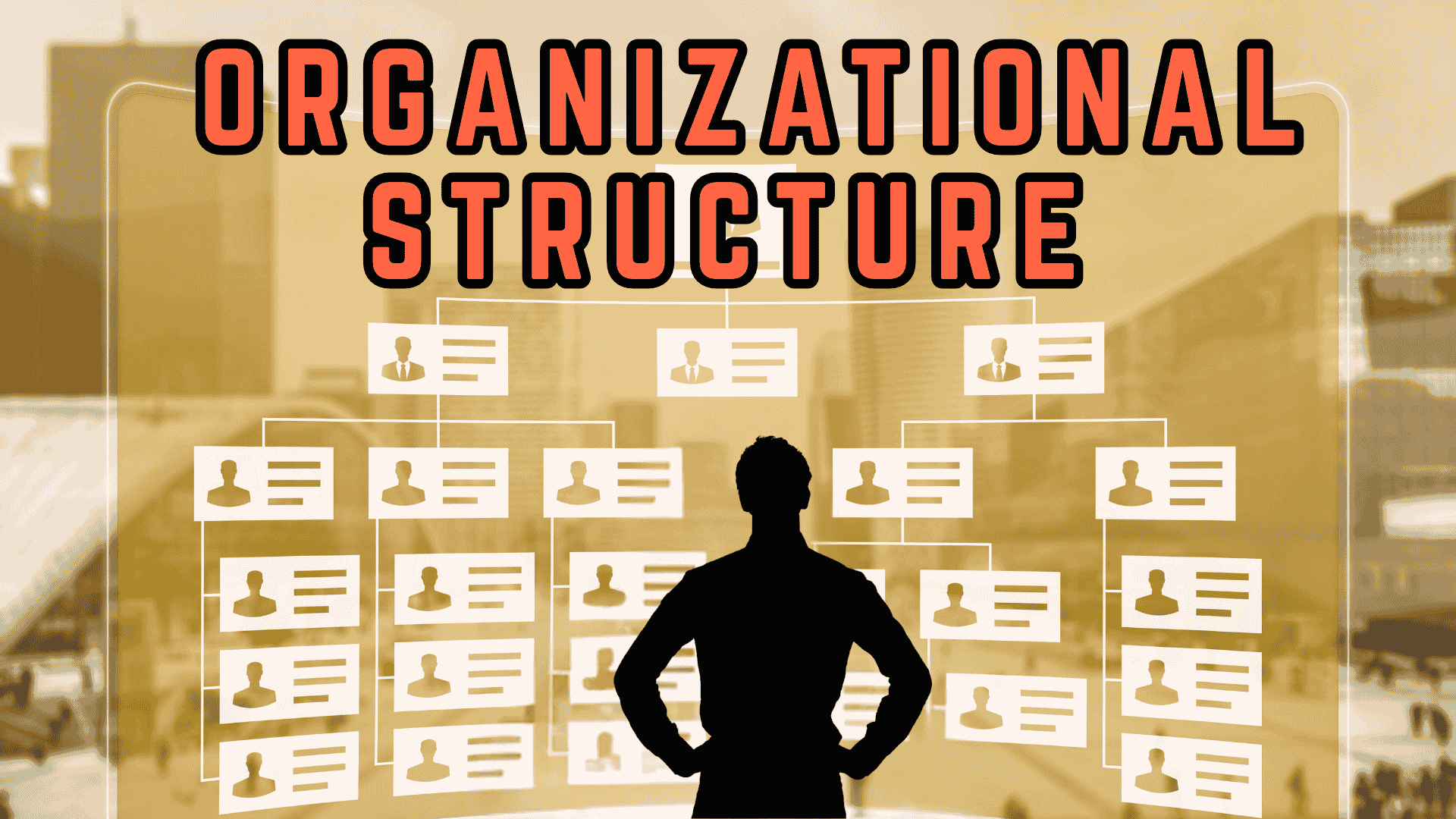Imagine trying to build a house without a blueprint. You might have all the right materials—bricks, wood, and windows—but without a plan defining where everything goes, the result would be chaotic and unstable. An organizational structure serves as the blueprint for a business. It’s a system that outlines how activities such as task allocation, coordination, and supervision are directed to achieve organizational aims. For anyone stepping into the world of management, understanding organizational structure isn’t just helpful; it’s fundamental.
A well-designed structure clarifies roles and responsibilities, streamlines decision-making, and shapes the flow of information across the company.It provides a visual representation of how the company is shaped and how it can best move forward to meet its objectives. This guide is designed for beginners, breaking down the core concepts of organizational structure to provide a clear and practical foundation for your management journey. We will explore not just what these structures are, but how to determine which might be the best fit for a team or company.
1. The Two Pillars of Structure: Centralization and Decentralization
Before diving into specific types of structures, it’s crucial to understand the two fundamental approaches to decision-making authority within an organization: centralization and decentralization.
1.1. What is a Centralized Structure?
In a centralized structure, decision-making authority is concentrated at the top levels of management. Directives and decisions flow downward through a clear chain of command.] This model promotes control and consistency across the organization.
How to implement a centralized approach:
- Establish a clear chain of command: Every employee should know exactly who they report to and who has the final say on important decisions. This is often visualized in a pyramid-shaped organizational chart.[6]
- Define roles and responsibilities clearly: Create detailed job descriptions and process documents to ensure that tasks are performed uniformly throughout the organization.
- Standardize procedures: Develop and enforce standard operating procedures (SOPs) for common tasks to ensure consistency and quality.
For example, a fast-food chain often uses a centralized structure to ensure that every franchise delivers the exact same customer experience, from the way food is prepared to the branding in the restaurant. The corporate headquarters makes key decisions about the menu, marketing campaigns, and supply chain, and these decisions are then implemented across all locations.
1.2. What is a Decentralized Structure?
Conversely, a decentralized structure distributes decision-making authority across various levels of the organization. This empowers lower-level employees and team leads with a high degree of personal agency, allowing them to make decisions relevant to their specific areas of work.
How to implement a decentralized approach:
- Empower teams and individuals: Grant teams and employees the autonomy to make decisions related to their projects and daily tasks without seeking constant approval from upper management.
- Foster open communication: Encourage a culture where information flows freely in all directions, not just top-down. This allows employees on the front lines to share valuable insights with leadership.
- Focus on goals, not methods: Set clear objectives for teams, but allow them the flexibility to determine the best way to achieve those goals. This fosters innovation and adaptability.
A technology startup, for instance, might thrive with a decentralized structure. This allows its product development teams to respond quickly to market feedback and technological changes without being slowed down by layers of bureaucracy.
2. Common Types of Organizational Structures
Organizations can be structured in numerous ways, each with its own set of advantages and disadvantages. The choice of structure often depends on the company’s size, goals, and industry.
2.1. The Hierarchical Structure
The hierarchical structure is the most common type, resembling a pyramid with a clear chain of command from top to bottom.[5][12] Authority and responsibility are well-defined at each level.
- How it works: At the top is the highest level of authority (e.g., the CEO), followed by senior management, middle managers, and then front-line employees at the base. Each employee reports to a single supervisor.
- Best for: Larger organizations and businesses operating in stable environments where control and efficiency are paramount.
- Advantages: It establishes clear lines of authority, provides a clear career path for employees, and allows for specialization.
- Disadvantages: It can be inflexible, slow down decision-making, and create barriers to communication between departments.
A large manufacturing company, such as an automobile plant, is a classic example. The plant manager is at the top, followed by department heads for production, quality control, and logistics. Each department has supervisors who oversee the work of the assembly line workers. This clear structure ensures that production processes are standardized and efficient.
2.2. The Functional Structure
This is a common type of hierarchical structure where the organization is divided into departments based on specialized functions. Employees with similar skills and roles are grouped together.
- How it works: The company is broken up into departments like marketing, finance, human resources, and operations.Each department is managed independently and reports to a top-level executive.
- Best for: Small to medium-sized businesses that offer a limited number of products or services.
- Advantages: It promotes a high degree of specialization and deep expertise within each function. It is also scalable and operationally efficient.
- Disadvantages: This structure can lead to “silos,” where departments become isolated and communication across functions is limited.
Consider a digital marketing agency. It would likely have separate departments for search engine optimization (SEO), content creation, social media management, and client services. This allows the agency to build deep expertise in each of these areas and deliver high-quality, specialized services to its clients.
2.3. The Divisional Structure
In a divisional structure, the company is organized into semi-autonomous divisions, each focused on a specific product, market, or geographical region.Each division essentially operates like its own smaller company, with its own resources for functions like marketing and sales.
- How it works: A large corporation might have a separate division for each product line it produces or for each country it operates in. Each division is responsible for its own performance.
- Best for: Large companies with diverse product lines or operations in multiple geographic locations.
- Advantages: It allows divisions to be more flexible and responsive to the specific needs of their market. It also makes it easier to track performance and hold divisional managers accountable.
- Disadvantages: It can lead to a duplication of resources and functions across divisions, which can be costly. It might also limit knowledge sharing between divisions.
A multinational consumer goods company is a prime example. It might have a North American division, a European division, and an Asian division. Each of these divisions would be responsible for the sales and marketing of the company’s products within its respective region, allowing it to tailor its strategies to local tastes and preferences.
2.4. The Flat (or Horizontal) Structure
A flat organizational structure has few, if any, levels of middle management between employees and executives.This approach encourages less supervision and more involvement from all employees.
- How it works: Staff-level employees report directly to the top managers or even the owner. The chain of command is very short.
- Best for: Startups and small businesses where quick decision-making and adaptability are crucial.
- Advantages: It improves communication, speeds up decision-making, reduces overhead costs, and can lead to higher employee engagement and innovation.
- Disadvantages: It can be difficult to maintain as the company grows, and the lack of clear progression paths may affect employee motivation. It is rarely practical for larger organizations.
Many tech startups begin with a flat structure. A small team of developers, designers, and marketers might all report directly to the founder. This allows the company to be highly agile, making quick decisions to adapt their product based on early user feedback.
2.5. The Matrix Structure
The matrix structure is a hybrid model that combines two or more types of organizational structures, typically the functional and the project-based structures.Employees in a matrix structure report to more than one manager.
- How it works: An employee might have a functional manager (e.g., the head of the engineering department) and a project manager (for a specific product they are working on).This creates a grid-like reporting relationship.
- Best for: Companies that work on complex projects requiring input from various functional areas, such as engineering or consulting firms.
- Advantages: It enhances collaboration and communication across departments, allows for efficient use of specialized resources, and helps break down departmental silos.
- Disadvantages: The dual reporting structure can cause confusion and potential conflicts between managers.
- Types of Matrix Structures: The level of authority between managers can vary, leading to weak, balanced, or strong matrix structures. In a strong matrix, the project manager has more authority, while in a weak matrix, the functional manager retains most of the power.
Imagine a large construction company building a new commercial complex. It would assemble a project team with specialists from different functional departments: engineers, architects, finance experts, and safety officers. These team members would report to both their functional department head and the project manager for the duration of the construction project.
2.6. The Team-Based Structure
In a team-based structure, the organization is composed of teams that work towards a common goal.This structure is designed to disrupt the traditional hierarchy and focus more on collaboration and giving employees more control.
- How it works: Employees are grouped into cross-functional teams, each responsible for a specific project or task from start to finish. These teams are often self-managing.
- Best for: Organizations that rely on creativity and rapid problem-solving.
- Advantages: It increases productivity and performance through collaboration, breaks down barriers between departments, and streamlines processes by allowing teams to make decisions quickly.
- Disadvantages: It can sometimes make individual career paths less clear and may pose challenges in motivating individuals when accomplishments are rewarded at the team level.
An advertising agency might use a team-based structure. For each client campaign, a dedicated team is formed, consisting of a strategist, a copywriter, a graphic designer, and an account manager. This team works collaboratively on all aspects of the campaign, from initial concept to final execution.
2.7. The Network Structure
A network structure involves a central core organization that outsources or subcontracts many of its non-core functions to other organizations.This model focuses on open communication and relationships rather than a strict hierarchy.
- How it works: The company maintains control over its core functions (like design or marketing) while outsourcing functions like manufacturing, distribution, or customer support to specialized external partners.
- Best for: Businesses that want to remain lean and flexible, focusing on their core competencies while leveraging the expertise of others.
- Advantages: It provides flexibility, allows for a high degree of specialization, and can reduce overhead costs.
- Disadvantages: It involves a loss of control over outsourced functions and a heavy reliance on external partners.
A clothing brand, for example, might design its apparel in-house but outsource the manufacturing to factories in other countries and use a third-party logistics company for shipping and distribution. This allows the brand to focus on design and marketing, which are its core strengths.
3. How to Choose the Right Organizational Structure
There is no one-size-fits-all solution when it comes to organizational structure.The best choice depends on a variety of factors, including your company’s strategy, size, culture, and the industry in which it operates.
Here is a practical approach to making this decision:
- Define Your Company’s Goals and Strategy: Start by clarifying your business objectives. Are you aiming for rapid innovation, operational efficiency, or market expansion? Your structure should support your strategy. For example, a strategy focused on innovation might benefit from a more decentralized and flexible structure like a flat or team-based model.
- Assess Your Company’s Size and Complexity: The size of your organization is a critical factor. A flat structure that works well for a 15-person startup will not be effective for a 5,000-employee corporation.As a company grows, it will likely need more hierarchy and departmentalization to maintain order and clarity.
- Analyze Your Operational Needs and Workflow: Consider how work gets done in your organization. Do you handle discrete projects that require cross-functional collaboration? A matrix or team-based structure might be ideal. Or is your work highly specialized and routine? A functional structure could be more efficient.
- Consider Your Company Culture: Your organizational structure has a significant impact on your company culture.If you want to foster a culture of autonomy and collaboration, a decentralized structure is a good choice.If your culture values order and discipline, a more hierarchical structure might be appropriate.
- Be Prepared to Adapt: Organizational structures are not set in stone. As your business grows and the market evolves, you may need to adjust or completely change your structure to meet new challenges and opportunities.
Conclusion
For a new manager, understanding organizational structure is like learning the rules of the game. It provides the framework within which everything else happens: how decisions are made, how teams collaborate, and how information flows. From the rigid clarity of a hierarchical structure to the dynamic flexibility of a network model, each type offers a different blueprint for success.
By carefully considering your organization’s unique goals, size, and culture, you can choose and help shape a structure that not only clarifies roles and responsibilities but also empowers employees, fosters collaboration, and drives the entire organization toward its objectives. The right structure isn’t just about drawing lines and boxes on a chart; it’s about creating an environment where people can do their best work together.
Frequently Asked Questions (FAQ)
1. What is an organizational structure?
An organizational structure is a system that outlines how certain activities are directed to achieve the goals of an organization. It defines roles, responsibilities, and how information flows between levels within the company.
2. Why is organizational structure important?
A clear organizational structure is important because it improves efficiency, provides clarity for employees, streamlines decision-making, and helps coordinate teamwork to achieve business goals.
3. What is the most common type of organizational structure?
The most common type is the hierarchical structure, which features a clear chain of command from the top down.The functional structure, a type of hierarchical structure where employees are grouped by specialty (e.g., marketing, finance), is also very common, especially in small to medium-sized businesses.
4. What is the difference between a functional and a divisional structure?
A functional structure groups jobs based on similar skills and functions (e.g., all accountants are in the finance department). A divisional structure groups jobs based on a specific product, market, or geographic location, with each division operating as a semi-autonomous unit.
5. What are the main benefits of a flat organizational structure?
The main benefits include faster decision-making, better communication between employees and leadership, increased employee autonomy and engagement, and lower overhead costs due to fewer layers of management.
6. When is a matrix structure a good choice?
A matrix structure is a good choice for organizations that work on complex projects requiring collaboration between different functional departments. It allows for the flexible deployment of specialized skills and resources across various projects.
7. How do I choose the right structure for my business?
To choose the right structure, you should assess your business goals, size, industry, and desired company culture. A structure that supports your strategic objectives and can adapt as your company grows is ideal.
references
Warning: The provided links lead only to the specified content. Other areas of those sites may contain material that conflicts with some beliefs or ethics. Please view only the intended page. Note: The source links are available in English only.
- Investopedia May 30, 2025 Author: Will Kenton Organizational structure for companies — examples & benefits.
Comprehensive, up-to-date explainer of definitions, centralization vs decentralization, and common structure types. - SHRM (Society for Human Resource Management) August 19, 2024 Top organizational structures for 2024 — guide.
HR-focused toolkit describing structure types, when to use them, and practical guidance for organizations. - Encyclopaedia Britannica Author: Kenneth W. Foster Organization theory — overview.
Scholarly background on organization theory and how structure relates to goals and environment. - Harvard Business Review March 1, 2016 Authors: Herman Vantrappen & Frederic Wirtz Making matrix organizations actually work.
Authoritative piece on matrix structures, benefits and common pitfalls. - McKinsey & Company July 1, 2008 Authors: Massimo Giordano & Felix Wenger Organizing for value.
Insight on divisional structures and organizing large, multi-business companies for performance. - AIHR (Academy to Innovate HR) Flat organizational structure — HR glossary.
Practical explanation of flat/horizontal structures, pros/cons and HR implementation tips. - People Management (Chartered Institute / industry site) August 5, 2024 How decentralised leadership creates resilient organisations.
Contemporary discussion of decentralization, leadership distribution and organizational resilience.







